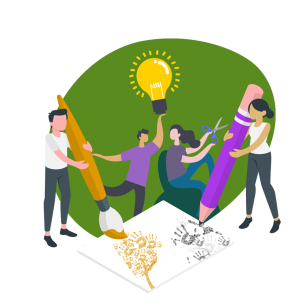This is the Story of...

The exercise exemplifies the influence of partial images we have about others, understanding how perception influences our behavior and our relationships with others.
Participants are divided into four equal sub-groups. Each group selects a reporter from among the group.
Each group receives an envelope including the beginning of a story about a character (“This is the story of...”).
The choice of the four characters should be adapted to local conditions:
As example in Tunisia could be: Mohamed, an unemployed youth from a poor district; Leila, a housekeeper; Jacob, a Tunisian Jew; Ines, a woman suffering from HIV.
In France could be: Momo, an immigrant; Shana, a gypsy; Julien, an 80-year-old man with no family; Aline, a single mother.
Working in the groups, the participant who receives the envelope starts to tell the story of the character (“This is the story of...”). and then designates another participant to continue the story.
Each group member must think fast to tell the story as quickly as possible. (You can set one minute per participant).
The designated reporter must not participate but must follow the story told by the other participants in the group (takes notes of the main points of the story that will report afterwards).
Each one of the reporters has five minutes to tell his story to the rest of the groups participants. After each story some questions for clarification are answered.
Do you think the stories contained stereotypes? Which ones? How did you feel when you identified those stereotypes?
From where are these stereotypes appearing? Are they describing everybody in that group?
In what way do you feel these stereotypes could led to prejudice? In what way do you feel a prejudice could lead to discrimination? Do you think you could be discriminated against due to others perceptions ?
The exercise may be sensitive, especially when working with groups that face direct discrimination in their daily lives, therefore is important to know the group.
This exercise could be a direct continuation or follow the exercise Who “are” I? Of this manual.
Learners could explore which are the main groups suffering from stereotypes and prejudices in their communities. Participants could then reflect on how are these prejudices affecting the lives of young people like them belonging to those groups, and what tools they have to deconstruct these prejudices.